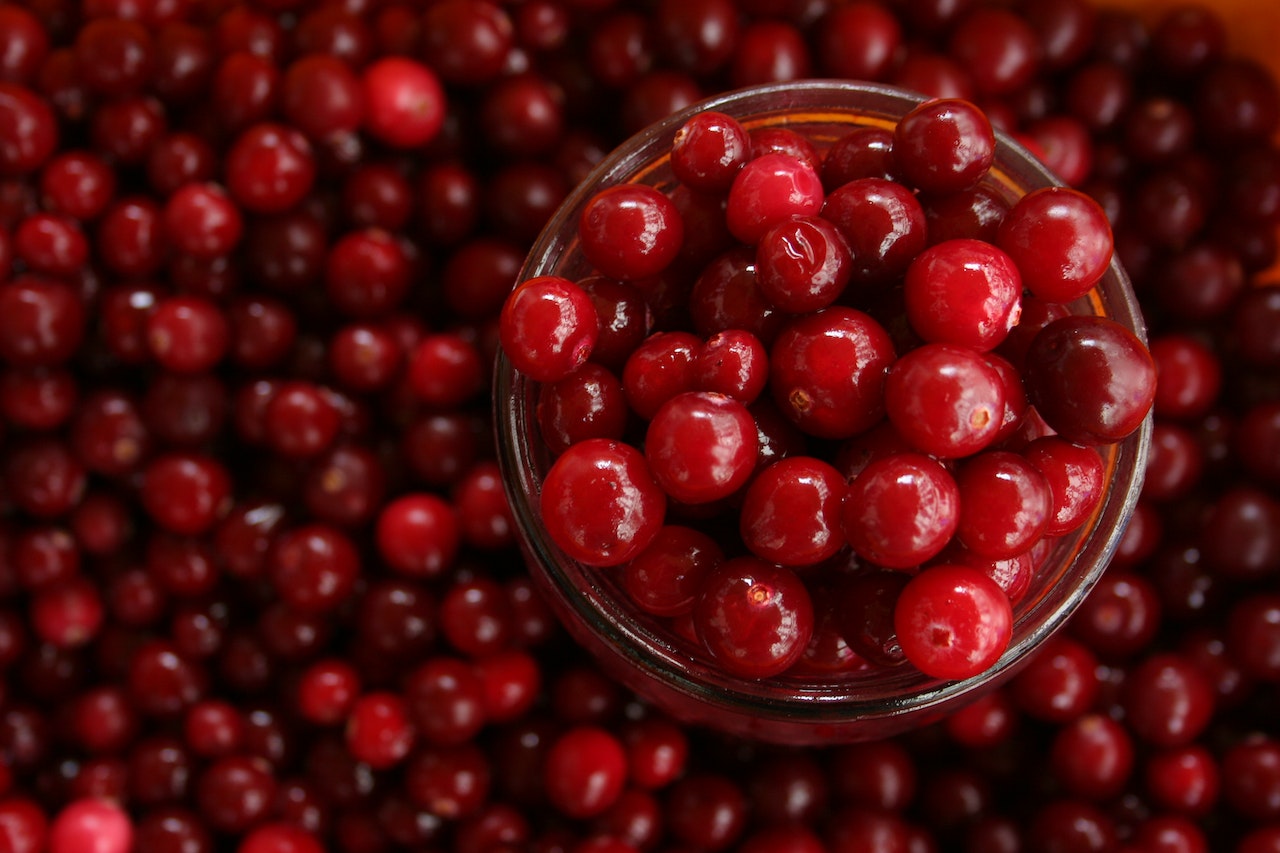
12 Foods You Can Eat to Fight Inflammation
Just a few days ago, I wrote an extensive article detailing how inflammation can lead to decreased immunity.
At the end of the article, I also told you I’d bring you an article on what foods you can eat to help fight inflammation.
To prove that I wasn’t blowing smoke, I’m giving you a list of what I consider to be some of the better herbs, spices, and foods you can eat to help fight inflammation.
Without further ado.
These Are My Favorite Foods You Can Eat to Fight Inflammation
1 – Blueberries: In terms of fruits you can eat for their anti-inflammatory properties, blueberries are one of the leading candidates as they’re extremely high in inflammation-fighting antioxidants. Specifically, blueberries are one of the leading foods in total antioxidant power. “After testing 24 varieties of fresh fruit, 23 vegetables, 16 herbs and spices, 10 different nuts, and 4 dried fruits, the US Department of Agriculture determined that blueberries scored highest overall in total antioxidant capacity per serving.”
2 – Salmon: So you might remember me writing on the subject of Omega-3 fatty acids and their anti-inflammatory properties. My article on the subject is here. As it turns out, salmon is one of the leading (if not the leading) source of Omega-3s. Omega-3s fight inflammation in ways most other substances can’t, and they’re also one of the most well-researched anti-inflammatories on the planet.
3 – Cloves: Yes, cloves, the same ones you find in all of your Christmas and Thanksgiving foods. So how do cloves manage to fight inflammation? They contain something known as Eugenol. Eugenol is highly effective in fighting inflammation as it works to block the COX-2 enzyme (which is what NSAIDS like ibuprofen do effectively). They’re also a potent antioxidant as they have the flavonoids kaempferol and rhamnetin, which are proven to scavenge the body for free-radicals.
4 – Turmeric: I’ve written about turmeric before, and the reason I’ve done so is it’s quite possibly one of the most powerful anti-inflammatories on the planet. What does turmeric have going on underneath its skin? Something known as curcumin which is an incredibly well-researched anti-inflammatory. Curcumin has the known ability to block something known as NF-kB. NK-Fb travels into the nuclei of cells and then triggers your body to experience an inflammatory response. So curcumin is an obvious weapon to use in the fight against inflammation.
5 – Cinnamon: You might think that I’m writing about cinnamon and cloves because I’m trying to keep things festive. Well, you’re not necessarily wrong, but at the same time there are some really exciting things going on inside of the cinnamon you sprinkle on pie and on lattes. Cinnamon has a powerful compound called Cinnamaldehyde that also works to block the NF-kB proteins. It’s not nearly as powerful as curcumin, but cinnamon regulates insulin levels (which can exacerbate an inflammatory response), making it a healthy and helpful anti-inflammatory.
6 – Cranberries: Alright, forget it, I’m going festive here. It might not be the season for cranberries anymore, but that doesn’t mean they’re not great for fighting inflammation later in the year. “For the cardiovascular system and for many parts of the digestive tract (including the mouth and gums, stomach, and colon), cranberry has been shown to provide important anti-inflammatory benefits. It’s the phytonutrients in cranberry that are especially effective in lowering our risk of unwanted inflammation, and virtually all of the phytonutrient categories represented in cranberry are now known to play a role.”
7 – Kale: Many dark leafy greens are effective fighters of inflammation, and Kale is definitely one of those greens. Some people will say because Kale has Omega-3s in it. The only problem is there aren’t much, and it’s the wrong kind. The good news is it contains phytonutrients, things like quercetin which are great at fighting inflammation and can help prevent cardiovascular disease. As a bonus, it also contains sulforaphane which has been proven to increase immunity.
8 – Rosemary: More reason to cook with Italian spices! Rosemary has a really cool compound called rosmarinic acid which, as you might have guessed, helps fight inflammation. It works by making something known as superoxide dismutase work harder. The reason this matters is because this powerful enzyme scavenges for a free-radical known as superoxide, which is associated with chronic inflammation. Another thing Rosemary does is it inhibits the synthesis of prostaglandins, which is a simple protein that triggers an inflammatory response. This comes from a compound called apigenin.
9 – Green tea: Teas are rich in antioxidants, and green tea is far and away one of the best out there. Research has shown that a specific compound known as Epigallocatechin Gallate (Epp-ee-gal-oh-cat-a-uh-kin Gal-ate) or – (EGCG) can help stave off an inflammatory responseIn, and it also protects the DNA at a cellular level. As I discussed in the article on inflammation, your DNA can be corrupted causing unrestrained cell growth which can lead to decreased immunity.
10 – Shitake Mushrooms: Not everyone is a fan of mushrooms. Well, they should be. “Shiitake mushrooms contain strong compounds with the natural ability to discourage inflammation, such as Ergothioneine, which inhibits oxidative stress. They also contain a number of unique nutrients that many people do not get enough of in their diet. One is copper, which is one of the few metallic elements accompanied by amino and fatty acids that are essential to human health. Since your body can’t synthesize copper, your diet must supply it regularly. Copper deficiency can be a factor in having poor heart health.”
11 – Garlic: Ok, so I’m going to hit on yet another food a lot of people don’t like. And, not only will garlic keep vampires away, it’ll do the same with inflammation. How? Well it contains sulfur based phytonutrients that are known to help reduce inflammation (in animal studies). These include diallyl sulfide (DAS) and thiacremonone, both of which have been found to reduce inflammation from conditions like arthritis, And among others. And there’s also another interesting note about garlic…
“One of the sulfur compounds in garlic (1,2,-vinyldithiin, or 1,2-DT) appears able to lessen this conversion of preadipocytes into adipocytes, and the impact of 1,2-DT appears to be inflammation-related. Even though very preliminary, this research on 1,2-DT is exciting because obesity is increasingly being understood as a disease characterized by chronic, low-level inflammation, and our inflammatory status is precisely where garlic’s 1,2-DT has its apparent impact.”
12 – Ginger: Ginger is a well-known and frequently used anti-inflammatory. This is why it’s been used over the centuries for that very purpose. What people in the old days didn’t know is ginger contained the compounds gingerols, shogaols, and paradols, which are absolutely wonderful at helping to ease inflammatory responses.
Derivatives of these compounds help neutralize the effects of dangerous free-radicals. 6-gingerol is one of the gingerols and it targets the free-radical peroxynitrite which is a frequent source of inflammation and pain. As I mentioned in the other article, leaky gut causes inflammation and 6-gingerol helps reduce peroxynitrites’s tendency to cause an overgrowth of bad gut bacteria.
Another thing ginger does is it works like (NSAIDS) – ibuprofen, Aleve, Celebrex etc. And using ginger to reduce inflammation associated with chronic inflammation is a great way to fight cancer.
Remember, There’s More Out There To Help Fight Inflammation
In general, the foods you can eat to fight inflammation are going to be natural, unprocessed, bright in color, and found in their natural habitat.
There isn’t enough room for me to write on all of the anti-inflammatory foods, but start with these, and you’ll be making a huge dent in the process.



